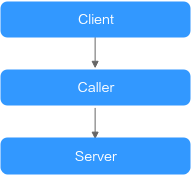What Is the Performance Loss of Mesher?
The service mesh technology uses network traffic hijacking to manage inter-service traffic. In addition to the performance loss in internal logic processing of Mesher, service mesh also causes extra conversion between the user mode and kernel mode (the CPU consumes extra resources). Compared with the latter, the former has little impact on performance. Therefore, the performance loss depends on the size of the payload transmitted over the network. For example, the size of the header and body affects the HTTP transmission speed. Latency of an end-to-end calling of Mesher is 1 ms. For example, if Mesher performance loss is added to the latency in an actual service calling, the total latency is 4 ms longer. However, such a latency is acceptable to the user.
The following table lists the performance test results before and after Mesher is used. The payload is small, that is, the character string helloworld. However, certain code is added to increase the computing time of the server to simulate the service code execution time.

|
Metric |
Before |
After |
|---|---|---|
|
TPS |
1749 |
1496 |
|
Latency |
2.8 ms |
3.34 ms |
|
CPU |
50% |
100% |
|
Concurrency |
5 |
5 |
The preceding results show that the performance loss of Mesher is low. The performance bottleneck lies in the service code. If the payload content is increased, the performance deteriorates further.
It is recommended that this technology be used to call services during initial technical selection and POC to test the real performance loss.
Feedback
Was this page helpful?
Provide feedbackThank you very much for your feedback. We will continue working to improve the documentation.See the reply and handling status in My Cloud VOC.
For any further questions, feel free to contact us through the chatbot.
Chatbot





